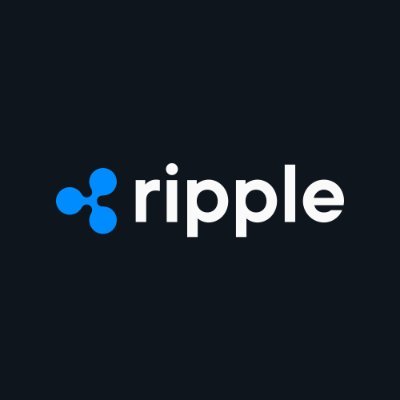Controversy over Payment Stablecoins: Currency, Securities, or "Other"?
Author: Xiao Za Legal Team
Recent Developments in the Cryptocurrency Industry
On June 5 and June 6, 2023, the U.S. Securities and Exchange Commission (SEC) filed lawsuits against two virtual asset trading platforms, Binance and Coinbase, asserting that certain cryptocurrencies qualify as "securities" under the Howey Test and must be regulated by the SEC. Back in March, the Commodity Futures Trading Commission (CFTC) classified virtual assets as "commodities," thereby claiming jurisdiction and accusing Binance of conducting unlicensed trading in the U.S. The jurisdictional dispute between the SEC and CFTC regarding cryptocurrencies will continue until a bipartisan acceptable draft is passed.
While the regulatory landscape in the U.S. remains unclear, some regions in Asia are eagerly embracing the Web 3.0 revolution.
Last Thursday (June 22), blockchain company Ripple received in-principle approval to operate in Singapore, which is also a rare piece of good news for the global cryptocurrency industry. This license will allow Ripple to offer regulated digital payment token products and services, expanding the cross-border transfer of XRP (a cryptocurrency closely associated with the company) among its clients (banks and financial institutions). It is worth noting that three years ago, the U.S. SEC used similar litigation tactics against Ripple, claiming that certain cryptocurrencies offered by Ripple met the definition of "securities," accusing Ripple of providing unregistered securities trading services. Currently, the SEC and Ripple are still engaged in a lengthy court battle, with Judge Torres repeatedly requesting the SEC to provide further legal clarifications.
As a leader in Web 3.0 in Asia, Singapore has implemented a series of well-thought-out industry regulations since 2020, including the Payment Services Act, Digital Token Offering Guidelines, and the Financial Services and Markets Bill. Riding on this momentum, Hong Kong has also taken action, with the Securities and Futures Commission (SFC) publishing a consultation summary on May 23 regarding proposed regulatory requirements for virtual asset trading platform operators licensed by the SFC. Following the amendment's official effectiveness on June 1, many virtual asset exchanges have flocked to Hong Kong to apply for licenses.
Overview of Stablecoins
The high volatility of the cryptocurrency market makes cryptocurrency investments less suitable for ordinary traders, while stablecoins provide an alternative to the high volatility of popular cryptocurrencies, including Bitcoin (BTC). Therefore, stablecoins are more useful as a medium of exchange compared to more volatile cryptocurrencies. Stablecoins can be pegged to fiat currencies like the U.S. dollar or to the prices of commodities like gold. Based on different stabilization mechanisms, common types of stablecoins in the market can be categorized as follows:
(1) Centralized stablecoins pegged to fiat currencies (e.g., USD, GBP): Fiat-collateralized stablecoins maintain reserves of fiat currency (or currencies) as collateral to guarantee the value of the stablecoin. These reserves are maintained by independent custodians and are subject to regular audits. Examples include Tether (USDT) and True (TUSD).
(2) Over-collateralized stablecoins backed by crypto assets: Since the value of the collateralized cryptocurrencies may also be subject to high volatility, these stablecoins are over-collateralized—meaning the value of the collateralized cryptocurrencies exceeds the value of the issued stablecoins. For instance, MakerDAO's Dai (DAI) stablecoin is pegged to the U.S. dollar but is essentially supported by 150% collateral in Ethereum (ETH) and other cryptocurrencies.
(3) Algorithmic stablecoins: Algorithmic stablecoins may or may not hold reserve assets. Their main distinction lies in the strategy of controlling the supply of the stablecoin through algorithms to maintain its value stability, essentially running a pre-set formula by a computer program. Unlike traditional currencies, this type of coin does not have the backing of a central bank.
Currently, centralized stablecoins pegged to fiat currencies (e.g., USD, GBP) are a regulatory focus in major jurisdictions such as the U.S., Singapore, and Hong Kong. In traditional fiat currencies, a 1% fluctuation in foreign exchange trading is quite rare. Therefore, compared to other currencies, these centralized stablecoins pegged to fiat currencies exhibit price stability, lower market risk, and widespread usability, making them the most promising candidates for becoming widely accepted payment methods. The following sections will analyze the qualitative aspects, regulation, and future trends of such stablecoins in the U.S., Singapore, and Hong Kong.
United States
In the SEC's lawsuit against Binance, the SEC claims that BUSD (a stablecoin redeemable 1:1 and pegged to the U.S. dollar) qualifies as a "security."
This Thursday (June 22), Federal Reserve Chairman Jerome Powell expressed his views on privately issued stablecoins: "We do indeed view payment stablecoins as a form of money. And in all developed economies, the ultimate backing for money comes from central banks."
According to the definition in the U.S. Congress draft on payment stablecoins (June 8, 2023 version) (g:\VHLD\060823\D060823.010.xml), a payment stablecoin is defined as a digital asset that is used or designed to be used as a means of payment or settlement. Its issuer is obligated to convert, redeem, or repurchase a fixed amount of currency value, indicating that it will maintain or generate reasonable expectations of stable value relative to a fixed amount of currency value. It does not fall under the category of securities issued by national currencies or investment companies.
Despite ongoing debates among U.S. regulatory agencies regarding the classification and jurisdiction of cryptocurrencies, the classification of payment stablecoins is relatively clear. Considering Powell's statements and the U.S. Congress draft, it is highly likely that payment stablecoins will be recognized as money (but not national currency), which will also influence the regulatory framework for other stablecoins in the future.
Singapore
The Monetary Authority of Singapore (MAS) classifies cryptocurrencies into three categories:
In Singapore, payment stablecoins are considered a type of digital payment tool rather than securities or currency. This means that payment stablecoins are not regarded as currency or securities regulated by MAS but are independently regulated as digital payment tools.
DPT refers to digital currencies issued and transmitted through cryptographic technology, including but not limited to cryptocurrencies, digital tokens, and digital stablecoins. DPT is typically used for payments and transactions and has relatively high liquidity and interchangeability. Among them, single-currency pegged stablecoins are a special type of DPT with payment and settlement functions. Therefore, single-currency pegged stablecoins must comply with DPT regulatory requirements, including implementing anti-money laundering and counter-terrorism financing measures, protecting consumer rights, and disclosing risks; they must also adhere to specific requirements for single-currency pegged stablecoins, such as reserve ratios and price fluctuation limits.
Hong Kong
According to the conclusions published by the Hong Kong Monetary Authority (HKMA) in January this year, "payment-related stablecoins" are defined as stablecoins with the potential to become widely accepted payment methods.
The HKMA stated that it will prioritize the regulation of stablecoins that claim to be pegged to fiat currencies (stablecoins that purport to reference one or more fiat currencies) (a type of payment stablecoin). Regardless of whether they are pegged to fiat currencies through algorithms or arbitrage mechanisms, and whether they are primarily used for retail, wholesale, or cryptocurrency trading, any stablecoin claiming to be pegged to fiat currencies will be included in the regulatory focus.
However, regarding specific definitions, the HKMA believes it is necessary to exclude cryptocurrencies regulated by other regulatory bodies, such as security tokens regulated by the HKSFC, to prevent regulatory arbitrage. The HKMA has initiated a second round of public consultation in early June this year, and it is believed that by next year at the latest, Hong Kong will also advance the issuance, circulation, and regulation of payment stablecoins.
Prospects and Future of Payment Stablecoins
In recent years, payment stablecoins have gained significant attention and adoption due to their ability to combine the stability of fiat currencies with the advantages of digital currencies. Considering the various benefits that stablecoins provide in the financial ecosystem, the prospects for payment stablecoins are quite promising, including improved payment efficiency, increased financial inclusion, and decentralized finance (DeFi) applications, among others.
At the same time, the issuance and regulation of payment stablecoins remain areas of concern:
1. Financial Stability Risks: The widespread use of payment stablecoins may impact the stability of the financial system. As a popular payment tool, if payment stablecoins encounter credit risks, liquidity risks, or other issues, it could trigger panic and turmoil in the financial markets.
2. Cross-Border Payment Regulation: Payment stablecoins facilitate cross-border payments, but this also presents challenges for regulators. Cross-border payments may involve issues such as money laundering and terrorist financing, necessitating enhanced international cooperation and regulation.
3. Data Privacy and Security: Issuers of payment stablecoins need to ensure the privacy and security of user data to prevent data breaches and hacking attacks.
4. Competition and Antitrust Issues: If a particular payment stablecoin dominates the market, it may lead to an imbalance in market competition, affecting the fairness and efficiency of the financial market.















